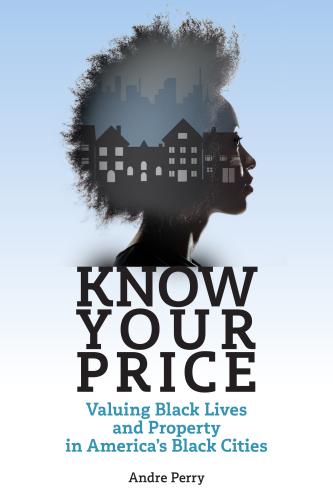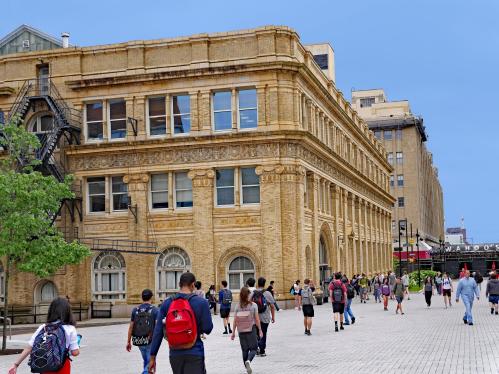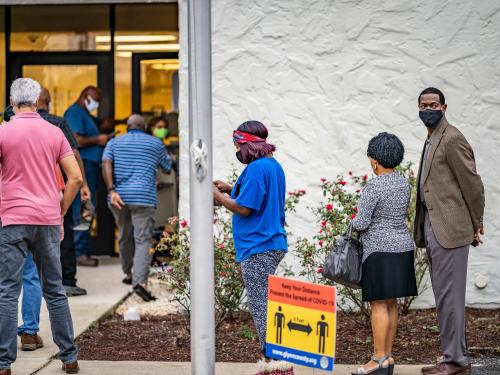Alongside much-needed investments in the nation’s roads, bridges, and water systems, President Joe Biden’s $2 trillion infrastructure proposal, the American Jobs Plan, promises to create more opportunities for small businesses and advance racial equity. One way to accomplish both of these goals, as we have written previously, is to invest in Black-owned businesses, allowing them to play a role in the plan’s revitalization of our infrastructure.
Black businesses do not lack for quality or service compared to their white-owned counterparts. What Black businesses lack is investment, which is reflected in their size and revenue. According to our analysis, roughly 96% of Black-owned businesses are sole proprietorships (unincorporated businesses owned and operated by one individual) compared to 79.9% of non-Black-owned businesses. Employer businesses (firms with more than one employee) are much more likely to participate in multifaceted infrastructure projects like those proposed in the Biden plan. Sole proprietorships need significant investment and growth before they can do the same.
Black business owners know too well what happens when government fails to recognize the composition of their businesses. The first round of Paycheck Protection Program funding in the 2020 CARES Act restricted COVID-19 relief subsidies to employer firms, which largely shut out Black entrepreneurs. The geographic coverage of the subsidy also showed bias; according to a Bloomberg analysis, 27% of businesses in white-majority congressional districts received relief loans, compared with 17% of businesses in districts where minorities made up more than half the population.
For Black businesses to truly benefit from the Biden infrastructure plan, its investments must reach the sectors and places where those businesses operate.
The 3 million Black sole proprietorships make up 11.7% of all such businesses in the country. (Meanwhile, Black-owned employer businesses make up only 2.2% of the total.) To participate in infrastructure projects, sole proprietorships need to be in the industries that will be in demand. Table 1 shows that Black sole proprietorships operate in different sectors than their non-Black counterparts.
Table 1. Black sole proprietorships operate in different sectors
| Top Black sectors | Number of Black sole proprietorships |
| Personal and laundry services | 537,000 |
| Transit and ground passenger transportation | 322,000 |
| Administrative and support | 312,000 |
| Top non-Black sectors | Number of non-Black sole proprietorships |
| Real Estate | 2,511,500 |
| Personal and Laundry Services | 2,222,000 |
| Administrative and support services | 1,797,000 |
The average revenue for Black sole proprietorships is $22,223, while the average revenue for non-Black sole proprietorships is $50,050. Table 2 shows that the sectors in which most Black sole proprietors operate earn less revenue than the sectors for non-Black sole proprietors.
Table 2. Black sole proprietorship sectors have less revenue than non-Black sole proprietorship sectors
| Type of business | Average revenue |
| Personal and laundry service | $25,293 |
| Transit and ground passenger transportation | $19,550 |
| Administrative and support services | $22,134 |
| Real estate | $100,992 |
On a geographic level, we calculated the share of Black-owned sole proprietorships relative to the local Black population in their respective metropolitan areas to get a sense of how regional ecosystems generally support firms. A ratio of 1 means that the Black population is well reflected in the business community. By examining the sectors those firms are in, we can also get a sense of the degree to which firms can grow to take on infrastructure projects.
There are several micropolitan areas (particularly in Texas) where the ratio of Black sole proprietorships to the Black population percentage is significantly greater than 1, meaning that the Black population is overrepresented in sole proprietorships. The high ratio may be skewed by sole proprietorships that participate in the “gig economy”—and, as such, are not traditional businesses, but rather a consequence of discriminatory labor markets and a lack of quality jobs. Whether the higher ratios in these micropolitan areas are due to a supportive local ecosystem or to discrimination and poor job quality is to be determined and should be further studied.
 Our research shows that to equitably represent the Black population share, we need to create 806,218 new Black employer businesses. The corresponding labor market reality is that if 806,218 sole proprietorships became employer businesses, that would create at least as many jobs. According to the Economic Policy Institute, as of April 2021, the U.S. was down 8.4 million jobs from where it was before the COVID-19 pandemic. Adding more than 800,000 new jobs would lower the overall unemployment rate and disproportionately help the Black unemployment rate.
Our research shows that to equitably represent the Black population share, we need to create 806,218 new Black employer businesses. The corresponding labor market reality is that if 806,218 sole proprietorships became employer businesses, that would create at least as many jobs. According to the Economic Policy Institute, as of April 2021, the U.S. was down 8.4 million jobs from where it was before the COVID-19 pandemic. Adding more than 800,000 new jobs would lower the overall unemployment rate and disproportionately help the Black unemployment rate.
While many sole proprietorships function as they are designed and their owners are happy with the state of their businesses, many others would like to expand but lack the capital to grow. There are organizations and firms in different cities that have created some simple but concrete ways to increase capital to this class of firms. Some of these efforts include:
- Converting sole proprietorships in infrastructure-related fields into employer-firms: The impact investment firm CapEQ endeavors to convert Black sole proprietorships to employer businesses as well as scale up current employer firms through its its Path to 15|55 initiative. Targeting investment strategically to meet infrastructure demands can increase participation, revenue growth, and the size of Black employer firms.
- Setting aside funds to invest in sole proprietorship conversion: Invest Detroit is building a $15 million Detroit small business recovery fund, offering loans ranging from $5,000 to $100,000 to help small business owners recover and sustain their businesses. Invest Detroit bundles multiple private investments, while local community development financial institutions (CDFIs) lend the investment dollars to sole proprietorships. Several of these CDFIs are microlenders, which ensures capital gets to sole proprietorships that often don’t need large loan amounts to meet their needs, but are overlooked due to this smaller need.
- Revising underwriting practices: The assessment of risk in existing underwriting processes often perpetuates bias and inequities. Because firms need capital to expand, biased underwriting is why sole proprietorships often cannot convert to employer firms. Further, because business owners often use home appraisals to get capital for their businesses, discrimination in home appraisals shut Black business owners out of these opportunities. To remedy this, Beneficial State Foundation has launched the Underwriting for Racial Justice national working group for financial institutions across the country; the Biden administration could partner with such organizations to leverage lessons to embed in its lending approach.
- Ensuring capital is usable: Even when capital is available, it is often structured in a way that is difficult for sole proprietorships to access. Most loans must be repaid based on a given length of time, but the alternative from Mission Driven Finance triggers repayment based on business-health metrics, such as when businesses reach specific revenue targets.
President Biden’s jobs plan intends to “reconnect neighborhoods cut off by historic investments” and “redress historic inequities.” It can do this by building capacity in Black businesses and Black communities. By investing in the development of Black firms and employing them in infrastructure projects, the plan will enable the Black community to participate in its own recovery. Growing Black sole proprietorships and converting them to employer businesses is a key first step before this vision can be realized.
The Brookings Institution is committed to quality, independence, and impact.
We are supported by a diverse array of funders. In line with our values and policies, each Brookings publication represents the sole views of its author(s).









Commentary
How Black-owned businesses can make the most out of the Biden infrastructure plan
April 29, 2021